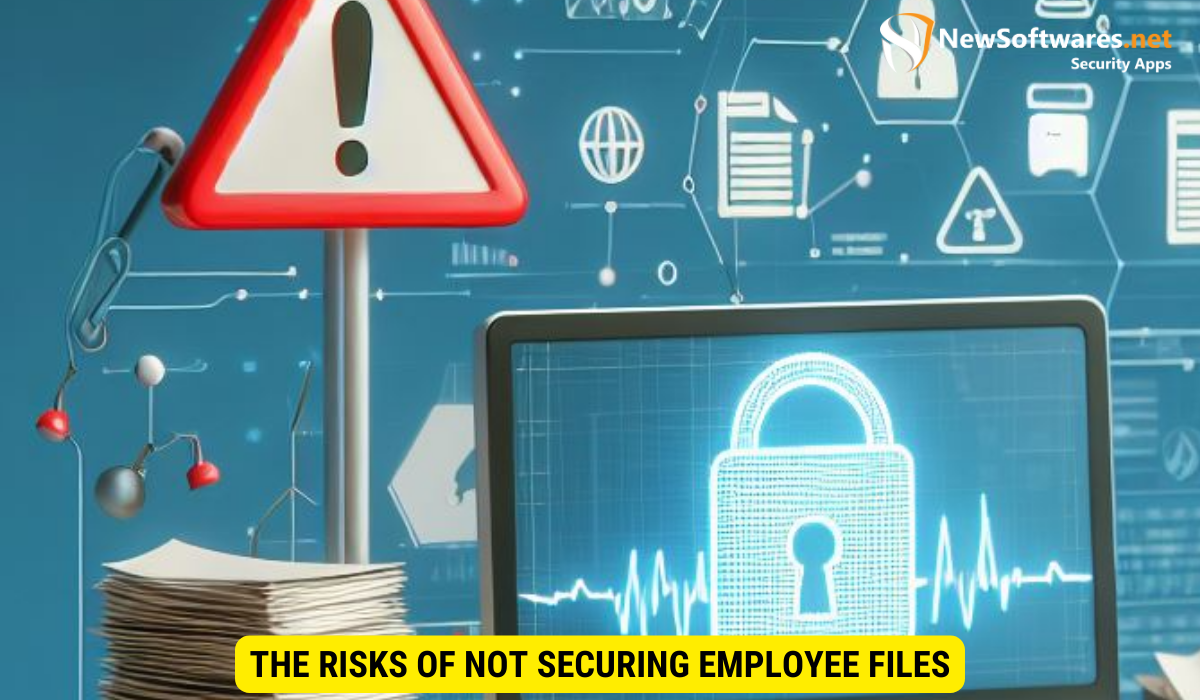Securing confidential employee files is vital for organizations to protect sensitive information, maintain privacy, and comply with legal regulations. Locking mechanisms play a crucial role in enhancing file security by restricting physical access, preventing unauthorized viewing, and adding an extra layer of protection.
In today’s digital age, the security of confidential files is of utmost importance for any organization. Companies hold a wealth of sensitive information about their employees, such as personal details, financial records, and performance evaluations. Ensuring the confidentiality and integrity of these files is vital to protect the privacy of individual employees and maintain the trust and credibility of the company as a whole. One effective way to enhance file security is by implementing a robust locking system for employee files.
Understanding the Nature of Confidential Files
Confidential files in a workplace refer to any type of information that is not intended for public knowledge and can potentially harm an individual or the company if accessed, disclosed, or tampered with improperly. These files could include employee contracts, medical records, social security numbers, or bank account information, among others.
Defining Confidential Files in a Workplace
Confidential files, by their very nature, require strict protection to prevent unauthorized access. Employers have a legal obligation to safeguard such information and ensure it is only accessible by authorized personnel on a need-to-know basis.
When it comes to defining confidential files in a workplace, it is essential to consider the different levels of sensitivity and the potential impact of their exposure. For instance, employee contracts contain personal and financial information that, if leaked, could lead to identity theft or financial fraud. Medical records, on the other hand, hold sensitive details about an individual’s health and treatment, which must be kept private to maintain patient confidentiality and comply with healthcare regulations.
Moreover, confidential files can also include trade secrets, proprietary information, or intellectual property that give a company a competitive edge. Unauthorized access to such files can result in significant financial losses, as competitors may gain insights into a company’s strategies, product development plans, or marketing campaigns.
Legal Implications of Mishandling Confidential Files
Mishandling confidential files can have severe legal consequences for organizations. Breaching confidentiality regulations and failing to protect sensitive information can result in significant fines, lawsuits, damage to the company’s reputation, and loss of customer trust.
It is crucial for organizations to understand the legal framework surrounding the handling of confidential files. Depending on the jurisdiction, there may be specific laws and regulations in place, such as the General Data Protection Regulation (GDPR) in the European Union or the Health Insurance Portability and Accountability Act (HIPAA) in the United States, that outline the necessary measures to protect personal and sensitive information.
Furthermore, organizations must implement robust security measures to prevent data breaches and unauthorized access to confidential files. This includes encryption, access controls, regular security audits, and employee training on data protection best practices. By prioritizing the security of confidential files, organizations can mitigate legal risks and safeguard their reputation in an increasingly data-driven world.
The Risks of Not Securing Employee Files

Failure to secure employee files can expose organizations to a variety of risks. Whether it’s due to negligence or inadequate security measures, the consequences can be detrimental.
Potential Threats to Unsecured Employee Files
Unsecured employee files are vulnerable to a range of threats, including unauthorized access, identity theft, data breaches, and employee misconduct. Hackers, disgruntled employees, or even accidental disclosure can put sensitive information at risk.
Consequences of Data Breaches in a Company
A data breach can lead to significant financial losses, damage to brand reputation, and legal ramifications. It can also result in the loss of trust from both employees and customers, who rely on the company to protect their personal information.
Let’s delve deeper into the potential threats that unsecured employee files can face. Unauthorized access to employee files can result in the exposure of personal and sensitive information, such as social security numbers, addresses, and bank account details. This information can then be used for malicious purposes, such as identity theft or financial fraud. The consequences for affected employees can be devastating, leading to financial ruin and emotional distress.
Data breaches are not just a concern for individuals; they can have far-reaching effects on the entire organization. In addition to the financial losses incurred from legal fees, regulatory fines, and potential lawsuits, the damage to the company’s reputation can be irreparable. Customers may lose confidence in the company’s ability to protect their data, leading to a loss of business and a decline in revenue.
Furthermore, data breaches can also result in the loss of valuable intellectual property and trade secrets. Competitors or malicious actors can gain access to confidential information, giving them a competitive advantage or the ability to undermine the company’s operations. This can have long-term implications for the company’s success and growth.
Employee misconduct is another risk that organizations face when employee files are not properly secured. This can include unauthorized access or sharing of sensitive information, misuse of company resources, or even intentional sabotage. Such actions can not only harm the organization’s reputation but also disrupt its operations and compromise the trust between employees.
In conclusion, the risks of not securing employee files are multifaceted and can have severe consequences for both individuals and organizations. It is crucial for companies to implement robust security measures and protocols to protect sensitive employee information, ensuring the trust and well-being of their employees and the long-term success of the business.
The Role of Locking in Securing Confidential Files
Locking mechanisms play a crucial role in enhancing the security of confidential files. By implementing the right locking system, organizations can mitigate the risks associated with unauthorized access and protect employee files from prying eyes.
How Locking Mechanisms Enhance Data Security
A robust locking system adds an extra layer of protection to employee files. It restricts physical access to those with authorized keys or codes, reducing the chances of theft, loss, or unauthorized viewing. Locking mechanisms act as a deterrent, discouraging individuals from attempting to access confidential files without proper authorization.
Choosing the Right Locking System for Your Files
When selecting a locking system for employee files, it’s important to consider the specific needs and requirements of your organization. Factors such as file volume, accessibility, and convenience should be taken into account. Options range from traditional locks and keys to electronic access control systems, each with its own advantages and considerations.
Implementing a Comprehensive File Security Strategy
Securing confidential files requires a comprehensive approach that goes beyond simply locking cabinets. Organizations should develop a robust file security strategy to ensure the ongoing protection of employee files and mitigate risks effectively.
Steps to Create a Secure Environment for Confidential Files
Creating a secure environment involves various steps, such as implementing strong access controls, educating employees about security protocols, regularly backing up files, and conducting periodic audits to identify and address vulnerabilities. It is essential to prioritize file security as an ongoing process rather than a one-time endeavor.
Maintaining and Updating Your File Security Measures
File security is not static; it requires regular maintenance and updates to keep up with evolving threats. Organizations should stay informed about the latest security practices, technologies, and compliance regulations. Conducting regular risk assessments and reviewing security protocols can help identify areas that require improvement.
The Future of Confidential File Security

As technology continues to advance, the landscape of file security is expected to undergo significant changes. Organizations must be prepared to adapt to emerging trends and challenges to stay ahead of potential risks.
Emerging Trends in Data Protection
New technologies, such as biometric authentication, machine learning algorithms, and blockchain, are likely to impact file security in the future. These technologies offer additional layers of protection and enhance the overall security posture of organizations.
Preparing for Future Security Challenges
To prepare for future security challenges, organizations should adopt a proactive approach to file security. Regularly assess and update security measures to align with industry best practices. Invest in employee training and create a culture of cybersecurity within the organization.
Key Takeaways
- Confidential files in the workplace must be protected to maintain the privacy of individuals and the company.
- Mishandling confidential files can have severe legal and reputational consequences.
- Failure to secure employee files exposes organizations to risks such as data breaches and unauthorized access.
- Locking mechanisms play a crucial role in enhancing file security and preventing unauthorized viewing.
- Creating a comprehensive file security strategy involves implementing strong access controls, educating employees, and maintaining security measures.
FAQs
Why should organizations secure employee files?
Organizations should secure employee files to protect sensitive information, maintain privacy, and comply with legal regulations.
What are the potential risks of not securing employee files?
Potential risks of not securing employee files include data breaches, unauthorized access, legal consequences, and damage to the company’s reputation.
What is the role of locking mechanisms in securing confidential files?
Locking mechanisms restrict physical access to confidential files, preventing unauthorized viewing and adding an extra layer of protection.
How can organizations create a secure environment for confidential files?
Creating a secure environment involves implementing strong access controls, educating employees, conducting regular audits, and staying informed about the latest security practices.
What can organizations do to prepare for future security challenges?
Organizations should adopt a proactive approach by regularly assessing and updating security measures, investing in employee training, and staying informed about emerging trends.
Conclusion
Securing confidential files, particularly employee files, is essential for organizations in today’s digital landscape. By understanding the nature of confidential files, the risks associated with inadequate security, and the role of locking mechanisms, companies can create a secure environment for their sensitive information. Implementing a comprehensive file security strategy and staying prepared for future security challenges will help organizations stay ahead of potential threats and protect the privacy and trust of their employees.
